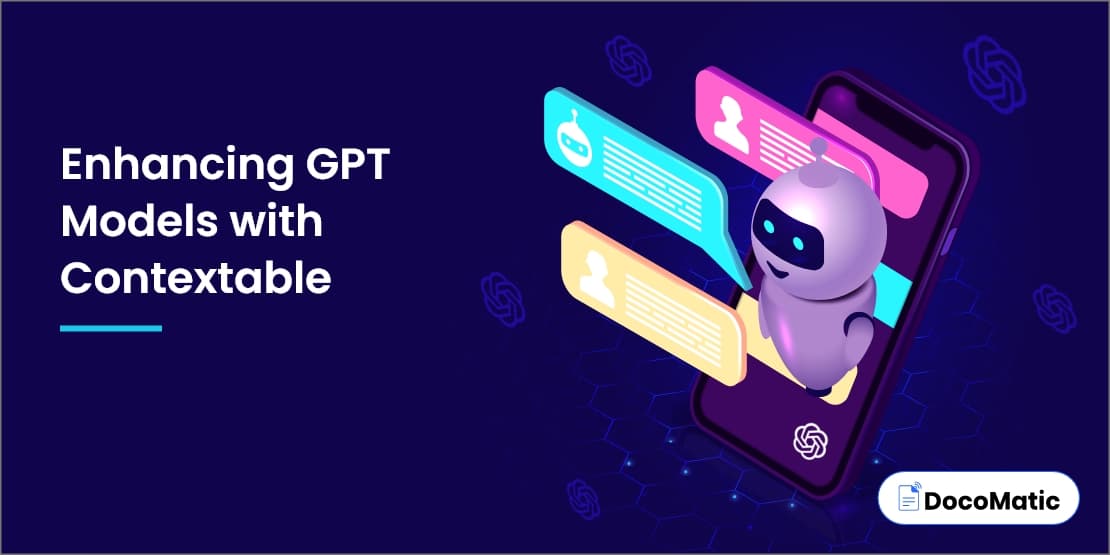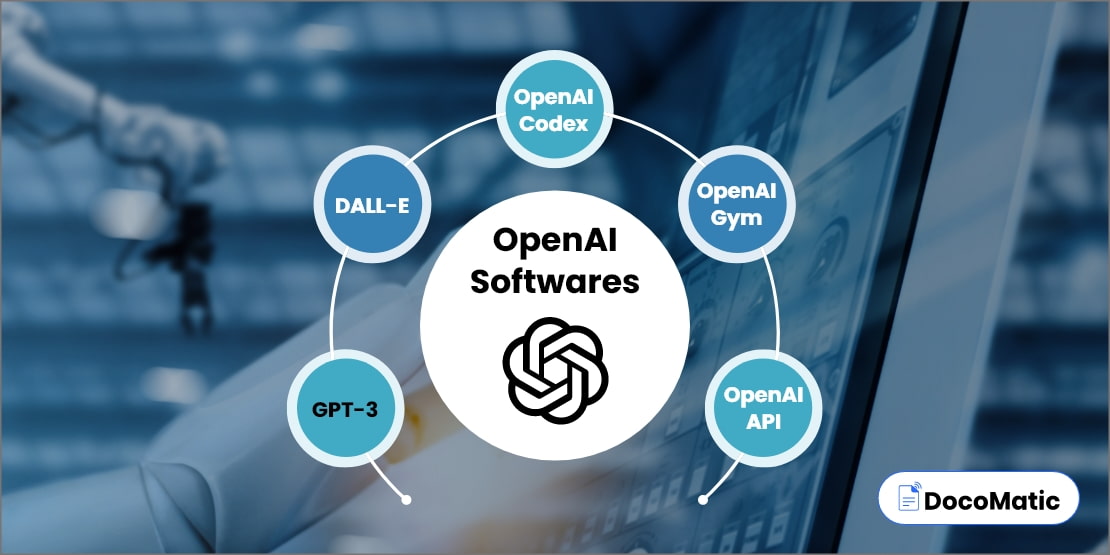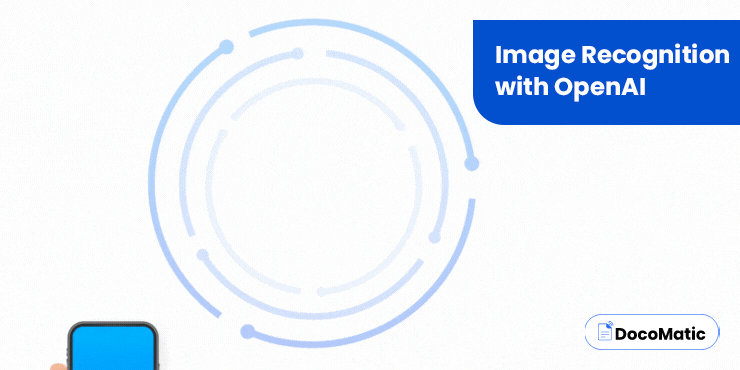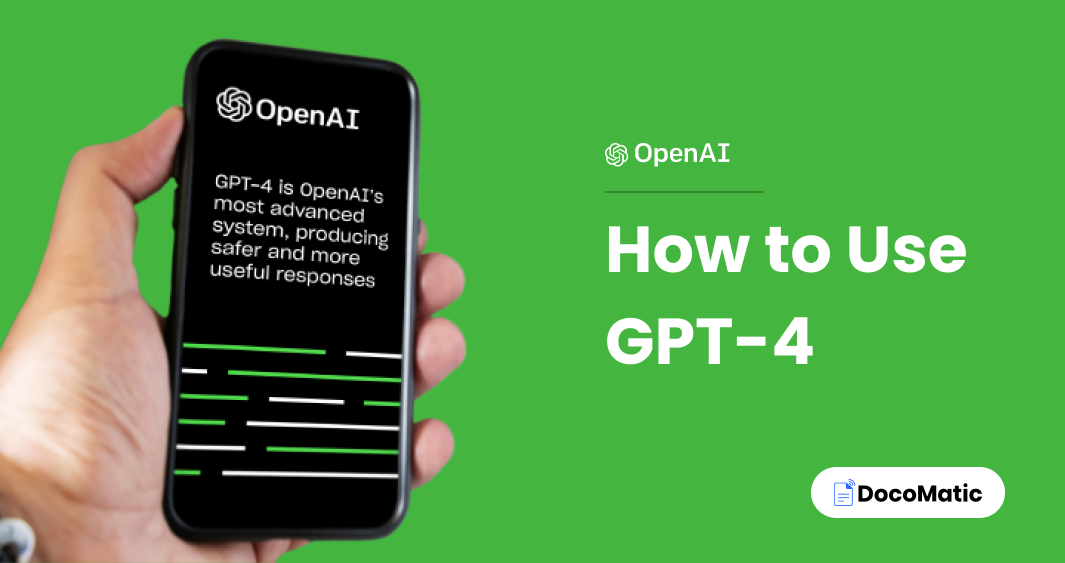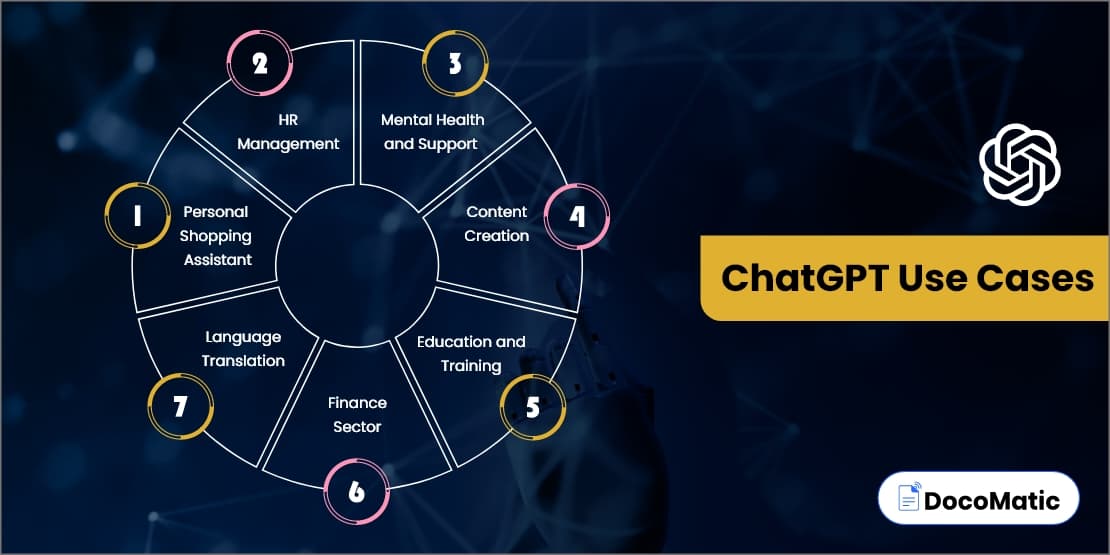Generative AI models like GPT have made considerable development in natural language processing. They can generate human-like writing that can be used in a variety of applications ranging from chatbots to content generation. Quite Amazed, right?
Well, one of the key challenges with these models is that they frequently lack the capacity to understand the context. This means that they generate text exclusively based on the input they receive without considering the larger context of the scenario.
Contextable is a solution that can assist in resolving this issue by providing greater contextualization for GPT models. Contextable can help generate more accurate and relevant text by assessing the context of the incoming text and adding further information to GPT models.
In this blog, we’ll look at how Contextable’s enhanced contextualization can help you get more from generative AI models like GPT.
Table of Content
Understanding Contextable
If you know what is OpenAI, then understanding Contextable is much easier. Contextable is an Application Programming (API) based tool that enhances GPT model contextualization. It helps the GPT model generate better text by evaluating the context of the input text and providing it with extra information.
Here are some of Contextable’s key features:
- Contextualization: By recognizing and analyzing a wide range of aspects, including entities, themes, emotions, and intent, Contextable provides valuable context to GPT models.
- Customization: Users can customize the API to fit their specific contexts with Contextable.
- Compatibility: Contextable is compatible with multiple GPT models, including GPT-2 and GPT-3.
Users must integrate the Contextable API into their GPT models before they start using the service. The API, once implemented, will process the input text in order to give the model more information. Hence, the quality and relevance of the output can be enhanced.
Applications of Contextable With GPT Models:
Contextable can be used in a variety of fields and situations, such as
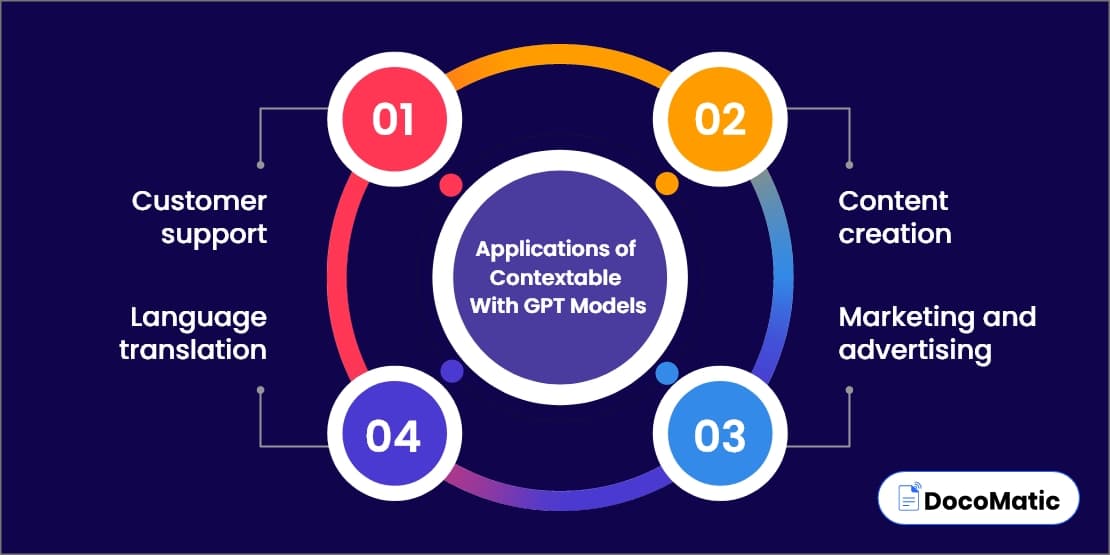
Customer support
With Contextable, chatbots for customer service can be made more accurate and useful. Chatbots can learn from this by receiving more detailed contextual information for use by GPT models, allowing for a better understanding of customer queries and more precise answers.
Content creation
The content produced by GPT models can be enhanced with the help of Contextable. The incoming text is analyzed in context, and then the results are used to generate new content. Writing product descriptions, news stories, and social media postings are just some of the many scenarios in which this could prove useful.
Marketing and advertising
Advertisements and marketing materials can be made more specific and relevant with the help of Contextable. GPT models can benefit from this analysis of context by producing content more suited to the tastes of the intended readers.
Language translation
The quality and usefulness of GPT-generated translation can be enhanced by using Contextable. Better contextualization aids the models in producing translations that are sensitive to the broader context of the text.
How Contextable can improve the accuracy and relevance of generated text?
- Contributing to GPT models’ capability of deducing intent from text input.
- Providing additional information about the context of the input text, such as entities, topics, and sentiment.
- Improving the diversity of generated text by taking into account a wider range of possible contexts.
Real-world Example
Contextable is used in the healthcare industry to improve the relevance and accuracy of patient communication generated by chatbots.
Best Practices for Using Contextable with GPT Models:
To get the most out of Contextable and GPT models, businesses and organizations should follow certain best practices. Here are some of the best practices:
1. Integrate Contextable into your existing workflows
You can maximize the benefits of Contextable by integrating it into your current workflows. If you want to make sure the integration goes well and the models are set up appropriately, you’ll need to work closely with your development team.
2. Select the right parameters for optimal performance
To maximize the benefits of Contextable, you need to customize your parameter choices to your specific use case. The proper language model, context window size, and GPT hyperparameters are all parts of this puzzle.
3. Test and iterate
If you want to achieve the best results using Contextable, you should test and iterate your models. This entails collecting user feedback and making constant adjustments to your models in response to it.
4. Address potential challenges
While there are many potential benefits to combining Contextable and GPT models, it is important to be aware of a few limitations. Model drift, insufficient training data, and poor data quality are all potential causes. To overcome these limitations, it is essential to work closely with your development team and implement best practices for data management and model maintenance.
We have listed below 2 case studies of implementing Contextable with ChatGPT successfully:
- Case study 1:
- Case study 2:
Contextable was used by a major e-commerce company to produce more relevant and targeted product recommendations for their clients. They were able to increase the precision and relevancy of their product suggestions by integrating Contextable with their current GPT models, which increased customer satisfaction and revenue.
Contextable was used by a healthcare provider to improve the accuracy and relevancy of the patient communication produced by their chatbots. Contextable was integrated with their current GPT models to produce more precise and pertinent answers to patient questions, which improved patient satisfaction and health outcomes.
Do check out our blog of use cases of GPT3 to know how the world is using it in different ways.
FAQs
Poor data quality, a dearth of training data, and model drift are a few potential challenges when deploying Contextable with GPT models. These challenges can be solved by establishing best practices for data management and model maintenance and collaborating closely with development teams to iterate and enhance the models regularly.
When utilizing Contextable with GPT models, choosing the appropriate parameters requires careful consideration of the use case and the audience’s requirements. This involves choosing the appropriate hyperparameters for your GPT model, the appropriate context window size, and the appropriate language model. To determine the best parameters for your particular use case, it is crucial to test and refine your models.
Contextable is applicable to a variety of scenarios and industries, including e-commerce, healthcare, banking, and other areas. Some specific use cases include producing more accurate and relevant financial reports for finance professionals, boosting the accuracy and relevance of patient communication produced by healthcare chatbots, and producing more focused and relevant product recommendations for online shoppers.
Conclusion
Contextable is a significant tool that can be used to improve GPT model performance, which is increasingly being employed to produce human-like writing across a variety of applications. Contextable can assist businesses and organizations in more successfully and efficiently achieving their objectives by adding more context and enhancing the quality and relevancy of created material.
The use of Contextable with GPT models can open up new opportunities for creating more tailored and relevant content, regardless of your field of employment—whether you work in e-commerce, healthcare, finance, or any other. Contextable can assist you in getting more from your GPT models and providing your audience with better results by paying close attention to best practices and the requirements of your particular use case.
